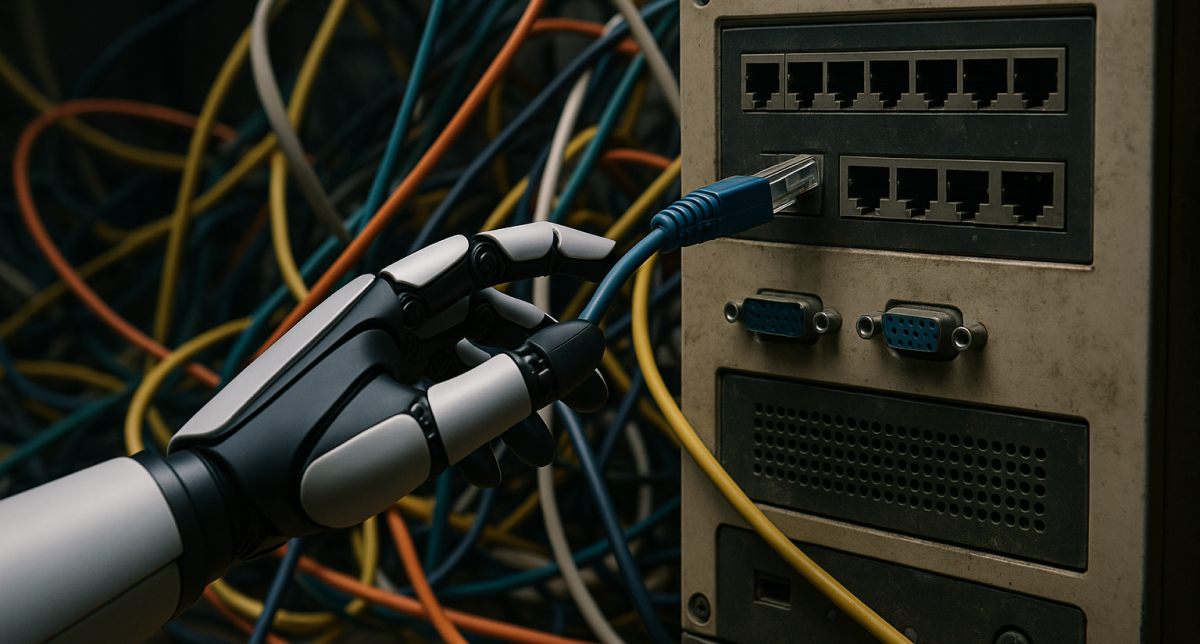AI Ready? Let’s Be Honest.
Rob Borley
3 min read • 25 April 2025
Across the boardrooms of enterprise organisations, a familiar phrase is echoing louder by the day: “We’re AI-ready.”
It’s a claim you’ll hear from CIOs, CTOs, and transformation leads alike. Often delivered with confidence. Sometimes with a little swagger.
There’s a new Head of AI in place. Some licences for Copilot have been procured. There’s even a pilot project or proof of concept under way; complete with board slide screenshots to prove it.
The problem is: it’s not true.
Or rather, it’s not true in the way it needs to be.
At Dootrix, we work closely with enterprise teams navigating the complex terrain between aspiration and implementation. And from what we see, most organisations are not truly ready for AI. Not yet.
AI isn’t an add-on
Let’s start with a simple truth: AI isn’t something you bolt on to your existing systems. It’s not an app. It’s not a dashboard. And it’s certainly not a single tool that can be licensed and deployed like an ERP or a CRM.
AI is not a feature; it’s a foundation. And claiming readiness without addressing that foundation is like saying your house is ready for solar panels while the roof is still made of tarpaulin.
The organisations that are moving fastest, and with the greatest long-term success, are those treating AI as a catalyst to re-architect their processes, not just optimise them. They’re not asking how AI can fit into existing workflows. They’re asking what those workflows should become in a world where AI is a native part of the system.
That’s a fundamentally different posture. And it requires a lot more work.
Data is still the bottleneck
If there’s a single red flag that gives away faux-readiness, it’s this: poor data hygiene.
It’s astonishing how many enterprise leaders talk about AI adoption without acknowledging that their organisation’s data is fragmented, unstructured, and riddled with duplication, gaps, and inconsistencies. And yet, data is the fuel AI runs on. Without clean, coherent, accessible data, even the most advanced models will produce output that is inaccurate, irrelevant, and likely misleading.
This isn’t a minor technical issue. It’s a strategic one.
Getting AI-ready means getting data-ready. That involves a clear data strategy, proper governance, active stewardship, and a commitment to unsexy but essential tasks like cleaning, structuring, and integrating your datasets. Until that groundwork is laid, no AI investment will reach its full potential.
Rebuild before you automate
We’ve seen this movie before. Every few years, a new wave of technology comes along promising automation. But automation without redesign only leads to faster chaos. Automated failure.
In the context of AI, this means more than stitching models into existing systems. It means asking whether the systems themselves are fit for purpose. If your business processes were designed for a pre-AI world, it’s time to revisit them.
AI-readiness is not about retrofitting. It’s about rethinking.
Do you understand the decisions AI will support? Have you mapped the inputs and outputs? Are the people involved ready to interpret and act on the results? These are not questions you can answer with a procurement plan.
Culture matters more than code
True AI readiness is cultural.
It requires a shift from certainty to curiosity. From control to collaboration. From deterministic thinking to probabilistic reasoning. From rules to constraints.
That means building teams who are comfortable learning in public. It means giving space to experimentation and accepting that many attempts will fail before anything truly valuable emerges. And it means creating a shared language between technical and non-technical stakeholders, so that opportunities can be identified and executed collectively, not in silos.
The biggest barrier to AI success is not the tech. It’s inertia. It’s people.
Let’s stop pretending
None of this is a criticism of ambition. If anything, it’s incredibly exciting to see so many enterprise leaders leaning into the potential of AI. But ambition without honesty is dangerous.
When we say we’re “AI-ready” before we’ve done the work, we delay the real transformation. We chase headlines, not outcomes. We build demos, not capabilities.
So here’s the challenge: let’s stop pretending. Let’s start preparing.
Let’s treat AI not as a project, but as a new operating system for business.
At Dootrix, we’re already helping teams make that shift. The shift from looking ready to being ready.
Ready to talk about what real readiness looks like?
We’d love to help. Get in touch.
Rob Borley


